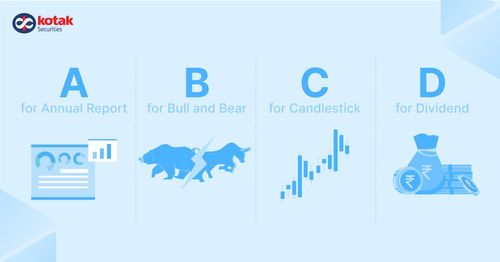How to Invest in Mutual Funds
Key Highlights
-
Mutual funds pool money from multiple individuals and invest in various securities.
-
While investing in mutual funds, assess your risk tolerance and compare historical performance. Moreover, diversify your investments and regularly monitor their performance.
-
Online investment in mutual funds can be done through the official website of an AMC. You can also invest with third-party mutual fund aggregators.
-
Investors can also invest in mutual funds offline. They can obtain the application form AMC and submit it with essential documents. They will receive the mutual fund units after the due payment.
-
Mutual funds include the expense ratio and transaction fees. Investors also have to pay exit load and Securities Transaction Tax (STT).
Process of Investing in Mutual Funds
You should follow this procedure to invest in a mutual fund.
-
Step 1: First, assess your risk tolerance. This is crucial to select the right mutual fund to invest in.
-
Step 2: Asset allocation is the next step. You have to allocate funds to different asset classes. To balance the risk, your portfolio should include both debt and equity instruments.
-
Step 3: Now, compare mutual funds by analysing their historical performance.
-
Step 4: Choose the mutual fund plan to invest in.
-
Step 5: For better returns, diversify your investments and monitor the performance of funds. Adjust your portfolio whenever it is necessary.
How to Invest in Mutual Funds Online
Online mutual fund investing is easy. Here are the steps to invest in mutual funds online.
1. Through the Official Website of an AMC
There are several mutual funds on the official websites of all asset management companies (AMCs). Fill out all the necessary information and submit it by following the directions on the website.
Complete the KYC procedure online (e-KYC) using your Aadhar number and PAN. The AMC verifies the information. You may begin investing after successful verification.
2. Using an App
AMCs make it simple and quick for investors to purchase mutual funds using mobile applications. Third-party mutual fund aggregators also offer platforms for investing in mutual funds. The apps facilitate investors to purchase and sell units. They can also get account statements and check their portfolio. Using these apps, Investors can invest in a variety of mutual funds of numerous fund firms.
Offline Mode of Investing in Mutual Funds
Investors can also invest in mutual funds offline. Here are the steps to invest in mutual funds offline.
- Step 1: Choose the asset management company.
Select the AMC that you want to invest with. Research various mutual fund houses and pick a suitable one.
- Step 2: Get the application form.
To find the application form, get in touch with the AMC or go to its website. You may also get it from a financial mutual funds distributor.
- Step 3: Properly fill out the application form
Provide your personal information, the amount of investment, and other details correctly. Make sure all the details are accurate.
- Step 4: Submit the application to the AMC
Once the application is complete, submit it to the AMC. Also, provide a copy of your PAN card or other essential documents.
- Step 5: Make the due payment
Finally, pay the due amount using a demand draft or a check.
You shall receive the confirmation shortly. You may receive an email or an account statement.
Costs Involved in Mutual Funds Investing
You will incur the following costs while investing in mutual funds.
1. Expense Ratio: The percentage of average assets under management that AMCs spend on these costs is the expense ratio. For instance, AMCs have administration, distribution, and other costs.
2. Transaction Fee/One-Time Charge: Investors may have to pay a small amount as transaction fees. This usually varies with different AMCs.
3. Output Load: An exit load is applicable when an investor withdrawal funds. It is expressed as a percentage of the current Net Asset Value (NAV) of the plan.
4. Securities Transaction Tax (STT): A Securities Transaction Tax is imposed when an investor chooses to sell mutual fund units.
Factors to Must Consider Before Investing in Mutual Funds
When choosing a mutual fund, you should consider the following factors.
1. Investment Objective
Having clear objectives helps you to choose the right fund according to them. So, you must determine your goal first. It may be buying a new home, vehicle, wedding, child's education, retirement, or anything else. Knowing the investment objective will help you understand the amount of wealth and time required to achieve it.
2. Select Funds Appropriately
It might be difficult to choose the right mutual funds because there are so many options available on the market. Thus, it is vital that to conduct in-depth study. Consider your investment goal, risk tolerance, and affordability when evaluating the fund you choose. If you want, you may also get assistance from an expert.
3. Examine the Risk Elements:
You must also keep in mind the risks associated with mutual funds. High-return funds usually have higher risks. If you want large returns and have a high tolerance for risk, you should consider equity plans. Debt plans, on the other hand, are good if you prefer low-risk with modest returns.
4. Maintain Updating Your KYC Documents
If one does not comply with Know Your Customer (KYC), he cannot invest in mutual funds. So, investors must adhere to KYC regulations. You'll need your PAN card, identity, and address proof to update your KYC status.
Conclusion
Today, investing in mutual funds has become easier. One can directly invest with the asset management companies. Individuals can visit their website and invest in the mutual funds they offer. In addition, third-party platforms also facilitate investing in mutual funds. You can invest in several funds of different AMCs on such platforms. Alternatively, you may also invest in mutual funds offline. You can reach out to the AMC and get the application form to buy mutual funds units. So, you can choose the method which is convenient for you. However, ensure you research properly before investing in any fund. Choose the funds that match your risk profile and goals.
FAQs on How to Invest in Mutual Funds
How to directly invest in mutual funds?
You can directly invest in a mutual fund through a Direct Plan available on the AMCs website.
Is there no tax on SIP?
There is no tax on SIP for particular mutual fund categories. One such category is equity-linked savings plans (ELSS).
Can anyone invest in mutual funds?
Yes, any individual with a bank account and PAN card can invest in mutual funds.
Is SIP better than FDs?
You can invest in an FD if your objective is capital preservation instead of higher returns. Invest in SIPs if you'd like to make target-oriented investments that will provide greater returns.
Can you redeem mutual funds units and get cash?
Yes, you can redeem mutual fund units and convert your holdings to cash.







